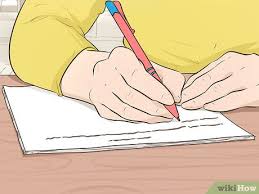Drafting petitions: Key essentials for beginners
Drafting a well-structured petition is one of the foundation skills every legal professional and litigant should learn. A petition is a formal written request to a court or legal authority for redress or relief, and its quality can deeply influence the prospects of legal success. For beginners, mastering key essentials and best practices is crucial for effective legal communication.
Understanding Petitions: Purpose and Principles
A petition acts as the gateway to judicial redress—whether it is a writ petition, appeal, or application under civil or criminal law. Effective petitions must:
- Present facts, legal grounds, and the relief sought in a clear, organized manner.
- Enable the court to understand the issue and the precise remedy requested.
- Reflect credibility and preparedness through complete details and supporting evidence.
Components of an Effective Petition
- Title and Heading
Every petition begins with a proper heading specifying:
- The name of the court or legal authority.
- The nature of the case and relevant statute (e.g., “Petition under Article 226 of the Constitution of India”).
- The names and designations of the parties—the petitioner (applicant) and respondent (opposite party).
- Introduction and Background
The introduction should:
- Briefly describe the petitioner’s identity, relationship to the matter, and reasons for seeking relief.
- Provide background context—summarizing events or circumstances leading to the dispute.
- Mention key facts concisely to prepare the ground for the detailed statement of facts.
- Statement of Facts
This section:
- Narrates events in chronological order and remains objective.
- Contains all relevant factual details essential for judicial understanding.
- Avoids blending facts with legal arguments—maintains factual integrity.
- Prioritizes clarity and brevity, as judges prefer crisp, focused drafts.
- Grounds for Relief
Here, the petitioner:
- Cites relevant statutes, constitutional provisions, or judicial precedents supporting the relief sought.
- Explains why the events amount to a legal grievance or violation.
- Refers to specific breaches—such as contract violations or infringement of rights—with brief, logical arguments.
- Prayer for Relief
The prayer clause specifies precisely what the petitioner seeks.
- Each requested relief should be stated clearly, reasonably, and tied to the facts and legal grounds.
- Use numbered sub-parts for different prayers (e.g., “Direct the respondent to…”, “Grant compensation of…”).
- Annexures and Supporting Documents
Supporting documents validate the petition’s claims.
- Attach relevant documents such as contracts, correspondence, notices, identity proofs, or certificates.
- Label and refer to each annexure clearly within the petition.
- Include only essential documents directly supporting the facts.
- Verification and Signature
The conclusion of the petition must include:
- A verification statement affirming truthfulness (e.g., “I, [Name], state that the facts herein are true to my knowledge and belief.”).
- The petitioner’s signature, along with the date and place of filing.
- If represented by counsel, the advocate’s signature, name, and registration number.
Best Practices for Beginners
- Conduct thorough legal research before drafting to ensure accuracy and relevancy.
- Write concisely—courts prefer precise and logically structured language over verbosity.
- Maintain consistent formatting with numbered clauses, sub-sections, and annexures.
- Address the correct authority or jurisdiction to avoid rejection.
- Anticipate possible objections and subtly respond within the draft.
- Maintain a professional yet empathetic tone, especially where human impact is significant.[1]
Conclusion
A well-drafted petition is more than a plea—it is a structured legal narrative conveying facts, law, and remedy with clarity. For beginners, mastering accuracy, coherence, and format is key to developing strong drafting skills and ensuring their client’s cause receives fair judicial consideration.
[1] https://www.scribd.com/document/808824193/Practical-Tips-for-Drafting-Legal-Petitions


